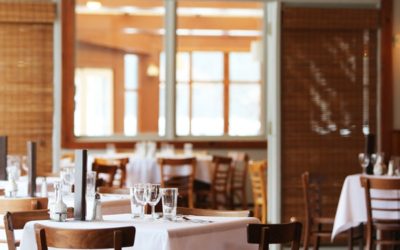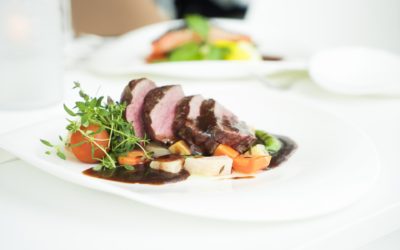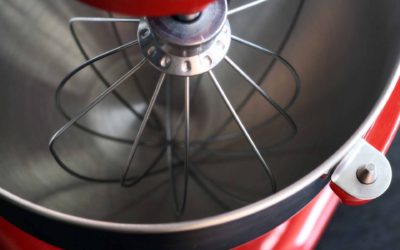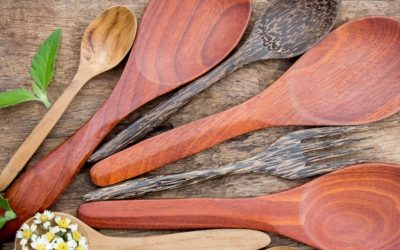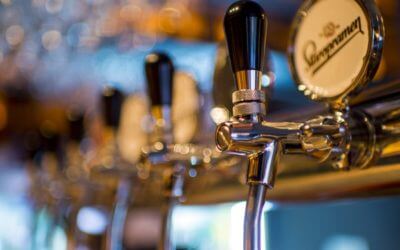Create a Memorable Dining Experience with the Right Flatware
June 9, 2017According to Will Rogers, “you will never get a second chance to make a first impression.”
In a restaurant, flatware is a small but essential part of making a great impression. Flatware is a particularly important design element because customers won’t just look it; they will actually use it for arguably the most important thing they can do at your restaurant: eating. That gives your customers a lot of time to form an impression of the flatware. You can bet it will play a significant role in the way your restaurant is received.
From basic to elegant, the type of flatware you provide your guests says a lot about your restaurant. It’s important to choose the right flatware based on the kind of establishment your restaurant is. This way, you will create the best possible dining experience for your guests and give them a good, lasting impression of your restaurant. In choosing your next set of flatware, there are two important things to take into consideration.
Flatware Style
The style of flatware you choose should mainly be based on the tastes of your guests. Think about the style of your restaurant and the types of people who frequent it. Is your restaurant a high-class establishment warranting classic or modern flatware, or do your customers prefer a more simple style? Decide which style of flatware is right for your restaurant, depending on the kind of restaurant you run.
Put yourself in your customers’ shoes when they pick up the flatware for the first time. Does your flatware match your tableware? Does it match the style you are looking to create? Is it too fancy or too dull for your particular restaurant?
Type of Material
The type of stainless steel you choose for your flatware is important because it is a big factor in the flatware’s appearance.
However, the mix of metals in stainless steel do improve its durability and resistance to rust. In choosing flatware, the chromium and nickel are most important metals to pay attention to.
Chromium is a tough, stain-resistant metal, while nickel is rust-resistant and gives the flatware more shine. There are several types of stainless steel used for flatware: 18/10, 18/8 and 18/0. The first number indicates the percentage of chromium in the steel, while the second number represents the amount of nickel.
All three types of stainless steel can easily last a lifetime, so your choice will again depend on the appearance that will best complement your restaurant. For the highest shine, choose 18/10 flatware, which has the largest proportion of shiny nickel. For a matte appearance, 18/0 is the type to go for.
Take some time to reflect on the kind of mood you want to set and the impression you want to make on your customers. Every detail is important. By carefully choosing the right style and material for your flatware, you will have perfected one more element of an amazing dining experience.
5 Keys to Creating the Perfect Restaurant Seating Areas
Restaurants are about so much more than just food. From the setting and layout of your restaurant to your choice of colors, it takes a lot more than an appealing menu to keep diners coming back for more. When setting up your restaurant, booths and chairs are important...
5 Essential Buying Tips for Your Next Food Prep Work Table
The right foodservice equipment is pivotal to the efficiency of your kitchen. One of the most important types of foodservice equipment for any kitchen is the work table. With limited room on countertops available for your food prep needs, the cooking process can drag...
Tips for Keeping Your Commercial Sink Sparkling Clean
Your commercial kitchen, just like your personal kitchen, must be kept clean at all times. With all of the cooking and food processing you do, it is inevitable that your sink gets messy. Cleaning up your commercial kitchen is incomplete without proper cleaning of your...
Food-Cutting Secrets to Beautiful Dishes
In the restaurant industry, presentation is often said to be just as important as the food itself. Using the right knowledge, skills and restaurant supplies, you can incorporate creativity into your presentation, making guests feel that they are getting something...
Top Space-Saving Tips for Commercial Kitchens
Top Space-Saving Tips for Commercial Kitchens Space is always an important consideration when setting up a kitchen, and this is even truer for commercial kitchens. With a strong focus on functionality and the kitchen supplies that meet the needs of your commercial...
5 Ways to Get the Most Out of Your Mixer
No one wants to eat off of dirty or tarnished silverware. A stand mixer is a highly useful piece of kitchen equipment to invest in. Although this type of kitchen equipment does not usually come cheap, it can last a lifetime when properly cared for. Despite all your...
Restaurant Prep Tool Selection Simplified
What’s a restaurant kitchen without high-quality prep tools that can withstand the pressure of frequent use? Whether you already have a restaurant you’re running, or you’re just planning to launch one, one vital factor that could make or mar your business is how you...
Beginner’s Guide to Choosing a Commercial Ice Cream Freezer
Ice cream is a delicious and appealing desert treat for everyone, young or old. Having made the decision to sell ice cream to your customers, whether you have a restaurant, convenience store, or specialty ice cream parlor, it is time to begin stocking up on the right...
How to Choose the Right Kitchen Scales for Your Restaurant
A food scale is an essential item in every restaurant’s store of kitchen supplies. Designed to take the guesswork out of food measurement and maintain consistent food serving sizes, food scales are indispensable kitchen supplies in the commercial kitchen. With such a...
Beer Chilling Systems: Which Type Is Right for My Restaurant?
A refrigeration unit is integral to the functioning of any restaurant. Beers are best served cold - there’s no questioning that! But which beer chilling system is the best? From reach-in coolers to glycol chillers, a beer chilling system is an important piece of...
What Equipment Will I Need to run a Food Truck?
There’s a lot of planning that goes into starting your own food truck business. Before you hit the road with your delicious food offerings, you’ll need to fill up your truck with all the right foodservice equipment. Considering the lengthy list of possible items to be...
8 Types of Food Thermometers: What You Need To Know
Food thermometers are essential restaurant supplies for your commercial kitchen. They ensure that foods prepared in your commercial kitchen are cooked to the right temperature and held at that temperature for as long as necessary to kill any harmful bacteria. This...
How to Identify the Best Food Processor for Your Needs
Highly versatile and extremely efficient, food processors are designed to take away the hard work from repetitive kitchen activities. This type of cooking equipment can quickly become an invaluable tool in your kitchen. From chopping, to shredding, grinding, mincing,...
6 Keys to Choosing the Best Chafing Dishes for Your Restaurant
The chafing dish, also known as the chafer, is an essential piece of restaurant equipment for any establishment that wants to keep food hot. This type of restaurant equipment gets its name from the French word, chauffer, which means to heat, and it’s easy to see why....
Turning up the Dial on Commercial Fryers: How to Choose One for Your Restaurant
Fried food is a well-loved favorite. This is a fact. It also makes a fryer an important piece of equipment to have in your commercial kitchen. Just consider how many appetizers and sides require frying: onion rings, French fries, and fried green tomatoes are just a...

